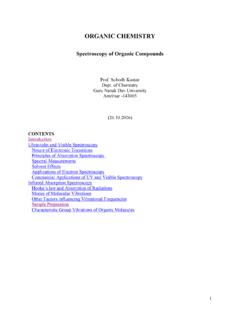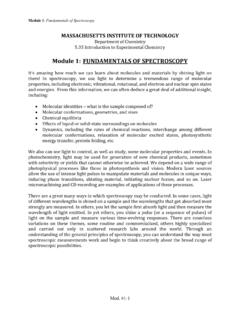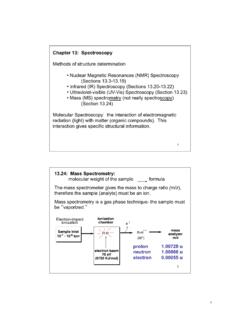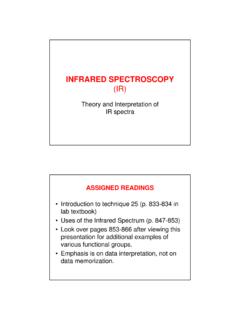Search results with tag "Molecular vibrations"
ULTRAVIOLET AND VISIBLE SPECTROSCOPY
www.uobabylon.edu.iqModes of Molecular Vibrations Other Factors influencing Vibrational Frequencies Sample Preparation Characteristic Group Vibrations of Organic Molecules 1. Introduction The molecular spectroscopy is the study of the interaction of electromagnetic waves and matter.
Module 1: Fundamentals of Spectroscopy
ocw.mit.eduSimilarly, time-dependent molecular vibrations that occur during and after irradiation by an IR pulse can be measured, although their time scale is so fast that ultrashort laser pulses are required to observe the individual vibrational oscillations. Time- dependent oscillations in molecular electronic charge distribution due to visible or UV ...
13.24: Mass Spectrometry
as.vanderbilt.eduInfrared: molecular vibrations (stretches, bends) - identify functional groups Radiowaves: nuclear spin in a magnetic field (NMR) - gives a map of the H and C framework organic molecule (ground state) light hν organic molecule (excited state) organic molecule (ground state) + hν relaxation 16 13.23 Ultraviolet-Visible (UV-Vis) Spectroscopy λ 200
INFRARED SPECTROSCOPY (IR)
utdallas.edu5 Infrared radiation is largely thermal energy. It induces stronger molecular vibrations in covalent bonds, which can be viewed as springs holding together two masses, or atoms. Graphics source: Wade, Jr., L.G. Organic Chemistry, 5th ed. Pearson Education Inc., 2003 Specific bonds respond to (absorb) specific frequencies VIBRATIONAL MODES
Molecular energy levels and spectroscopy
vallance.chem.ox.ac.ukTo a first approximation, molecular vibrations can be approximated as simple harmonic oscillators, with an associated energy E(v) = (v + ½)h where v is the vibrational quantum number and is the vibrational frequency (the symbols look quite similar – don't confuse them!). In the above expression, E(v) is in units of Joules.




